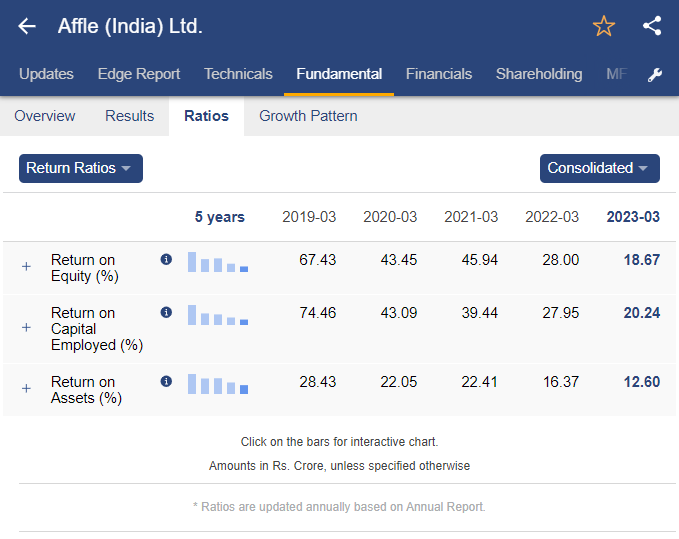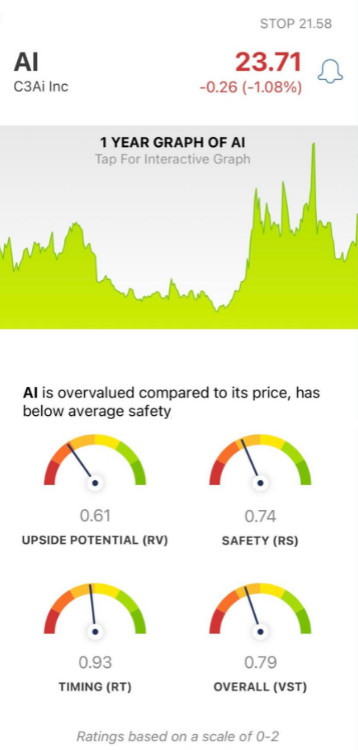20 Excellent Tips For Deciding On AI Stock {Investing|Trading|Prediction|Analysis) Sites
20 Excellent Tips For Deciding On AI Stock {Investing|Trading|Prediction|Analysis) Sites
Blog Article
Top 10 Tips To Evaluate Ai And Machine Learning Models Used By Ai Stock Predicting/Analyzing Trading Platforms
It is important to assess the AI and Machine Learning (ML) models used by trading and stock prediction platforms. This ensures that they offer accurate, reliable and practical information. Models that are not designed properly or overly hyped-up could result in inaccurate forecasts and financial losses. Here are 10 ways to evaluate the AI/ML platforms of these platforms.
1. Learn about the goal and methodology of this model
Clarified objective: Determine the model's purpose and determine if it's intended to trade on short notice, putting money into the long term, analyzing sentiment, or managing risk.
Algorithm transparency: See if the platform discloses types of algorithm used (e.g. Regression, Decision Trees Neural Networks and Reinforcement Learning).
Customization - Find out if you can tailor the model to meet your investment strategy and risk tolerance.
2. Measure model performance metrics
Accuracy: Test the accuracy of the model when it comes to predicting the future. However, don't solely depend on this measurement because it could be misleading when used in conjunction with financial markets.
Precision and recall (or accuracy) Find out how well your model is able to distinguish between true positives - e.g. accurate predictions of price changes and false positives.
Risk-adjusted returns: See whether a model's predictions produce profitable trades taking risk into consideration (e.g. Sharpe or Sortino ratio).
3. Check the model by Backtesting it
Historical performance: Use previous data to test the model and determine the performance it could have had in the past under market conditions.
Test the model on data that it has not been trained on. This will help prevent overfitting.
Analysis of scenarios: Evaluate the model's performance under different market conditions.
4. Make sure you check for overfitting
Overfitting sign: Look for models that have been overfitted. These are models that perform exceptionally well with training data, but poor on data that is not observed.
Regularization techniques: Find out whether the platform uses techniques like L1/L2 normalization or dropout to prevent overfitting.
Cross-validation is an essential feature for any platform to use cross-validation when assessing the model generalizability.
5. Assess Feature Engineering
Relevant features: Ensure that the model includes meaningful attributes (e.g. price or volume, as well as technical indicators).
Selection of features: You must make sure that the platform is choosing features with statistical significance and avoid unnecessary or redundant data.
Dynamic feature updates: Determine if the model adapts to new characteristics or market conditions over time.
6. Evaluate Model Explainability
Readability: Ensure the model gives clear explanations of its predictions (e.g. SHAP values, the importance of features).
Black-box Models: Be cautious when you see platforms that use complicated models without explanation tools (e.g. Deep Neural Networks).
User-friendly insight: Determine if the platform can provide actionable information to traders in a manner that they are able to comprehend.
7. Examine Model Adaptability
Changes in the market. Examine whether the model can adapt to changes in the market (e.g. a new regulation, an economic shift or a black swan phenomenon).
Check for continuous learning. The platform should update the model regularly with fresh information.
Feedback loops - Make sure that the platform incorporates real-world feedback and user feedback to improve the design.
8. Be sure to look for Bias, Fairness and Unfairness
Data bias: Ensure the training data is representative of the market and free from biases (e.g. the overrepresentation of certain areas or time frames).
Model bias: Check whether the platform monitors the biases in the model's prediction and if it mitigates them.
Fairness: Ensure whether the model favors or defy certain types of stocks, trading styles or particular sectors.
9. Evaluate Computational Efficiency
Speed: Determine whether the model can make predictions in real-time or with minimal latency, specifically for high-frequency trading.
Scalability: Determine whether the platform has the capacity to handle large datasets with multiple users, without performance degradation.
Resource usage: Examine to make sure your model is optimized to use efficient computational resources (e.g. GPU/TPU use).
10. Review Transparency and Accountability
Model documentation - Ensure that the model's documentation is complete information about the model, including its architecture as well as training methods, as well as limits.
Third-party Audits: Check whether the model was independently audited or validated by third organizations.
Make sure whether the system is fitted with mechanisms that can detect model errors or failures.
Bonus Tips
User reviews Conduct research on users and study case studies to determine the model's performance in actual life.
Trial period for free: Try the model's accuracy and predictability with a demo or free trial.
Support for customers: Ensure that the platform provides solid customer support that can help resolve any technical or product-related issues.
If you follow these guidelines You can easily evaluate the AI and ML models of stock prediction platforms and ensure that they are reliable as well as transparent and in line with your trading objectives. Take a look at the top rated ai for investing blog for website tips including ai stock prediction, stock ai, canadian ai stocks, best ai etf, ai stock trading app, ai stock trading, trade ai, ai for stock trading, copyright financial advisor, investing ai and more.
Top 10 Suggestions For Evaluating The Trial And Flexibility Ai Stock Predicting/Analyzing Platforms
In order to ensure that AI-driven stock trading and forecasting platforms meet your requirements You should look at their trial and flexible options before making a commitment to long-term. Here are the top ten tips to consider these elements.
1. Free Trial Availability
Tip: Check to see whether the platform permits you to try out its features for free.
The reason: The trial is a fantastic method to experience the platform and test the benefits without risking any money.
2. The Trial Period as well as Limitations
Verify the duration of the trial and any restrictions.
What are the reasons? Understanding the limitations of trial will allow you to decide if the trial is comprehensive.
3. No-Credit-Card Trials
Try to find trials that do not require you to input the details of your credit card prior to the trial.
The reason: This can reduce the risk of unplanned charges and allow users to choose not to.
4. Flexible Subscription Plans
Tip - Check whether the platform provides flexibility in subscriptions (e.g. quarterly annual, monthly, etc.)) and transparent pricing different tiers.
The reason: Flexible plans allow you to select the amount of commitment that best suits your budget and requirements.
5. Customizable Features
Examine the platform to determine whether it lets you alter certain features such as alerts, trading strategies, or risk levels.
Customization is important because it allows the platform's functions to be customized to your individual trading goals and needs.
6. Refund Policy
Tips: Find out how easy it is to cancel, upgrade or upgrade your subscription.
The reason: A simple cancellation procedure will ensure you are not stuck with plans you don't want.
7. Money-Back Guarantee
Tip: Search for platforms with a guarantee for refunds within a certain time.
Why: It provides an insurance policy in the event that the platform does not meet your expectations.
8. You will be able to access all features during the trial period
Tip - Make sure that the trial version has all the features that are essential and is not a limited edition.
You will be able to make the right choice if you test the full capability.
9. Customer Support During Trial
Tips: Assess the quality of support available throughout the trial time.
You can make the most of your trial experience by getting reliable assistance.
10. Post-Trial Feedback System
Check to see if feedback is sought during the trial in an effort to improve the service.
Why A platform that is based on feedback from users is more likely to grow so that it can meet the needs of users.
Bonus Tip Optional Scalability
If your trading grows it is recommended that the platform has more advanced features or plans.
You can decide whether an AI trading and stock prediction platform can meet your requirements by carefully considering the options available in these trials and their flexibilities before making an investment in the financial market. Read the top rated stocks ai for blog tips including ai investing, chatgpt copyright, ai investment advisor, incite, trader ai intal, invest ai, ai trading bot, stock ai, chart analysis ai, ai options trading and more.